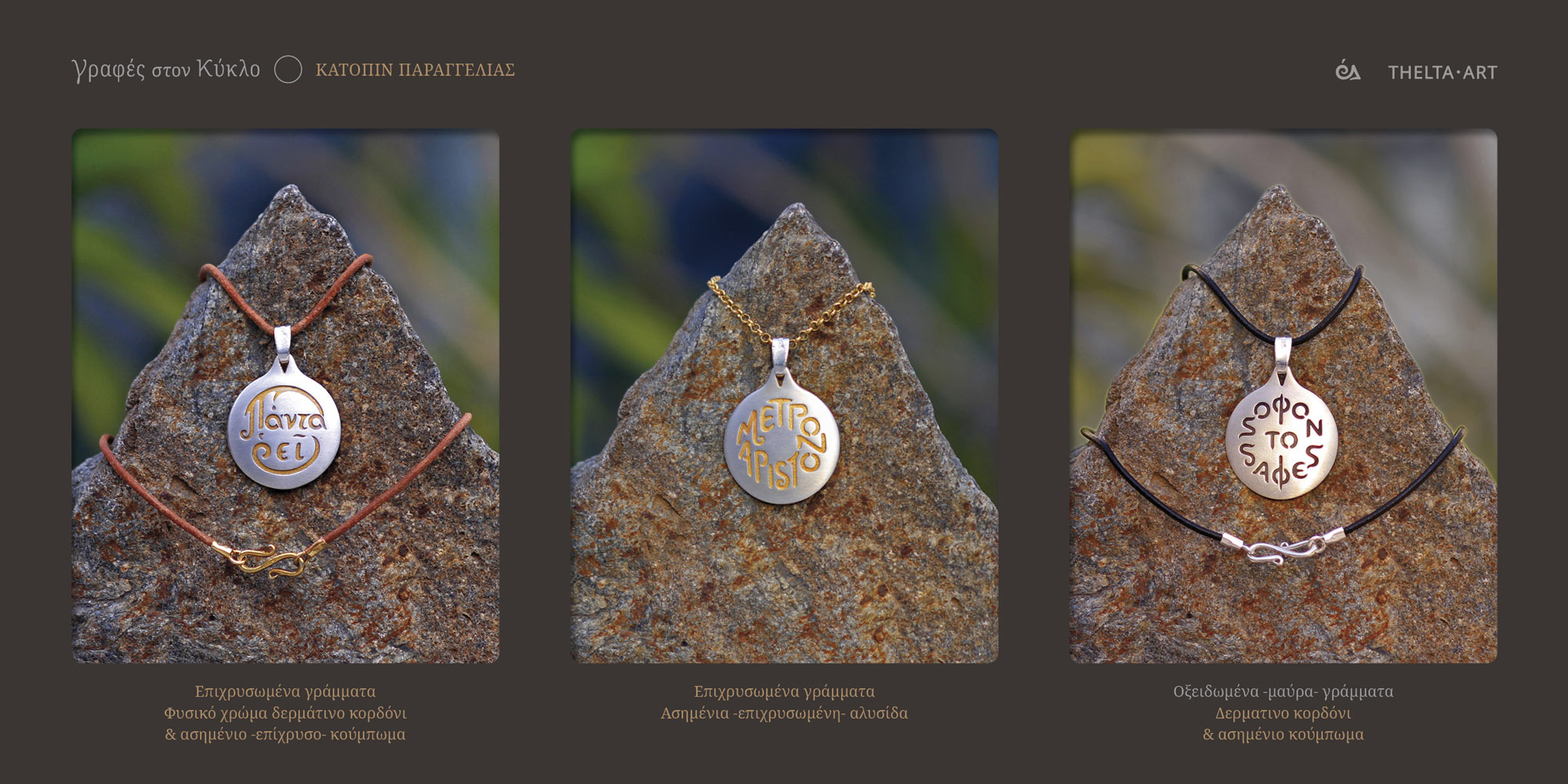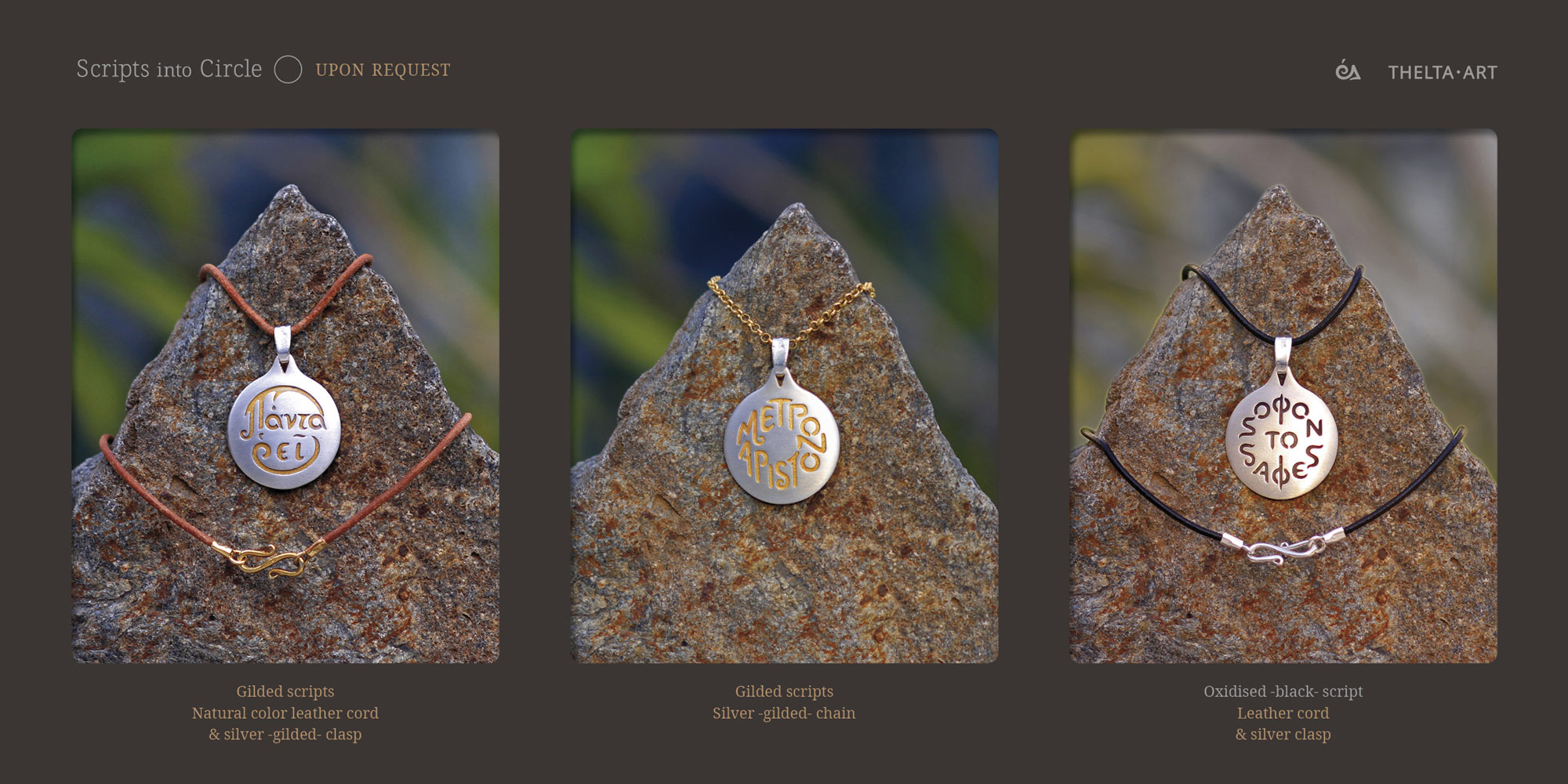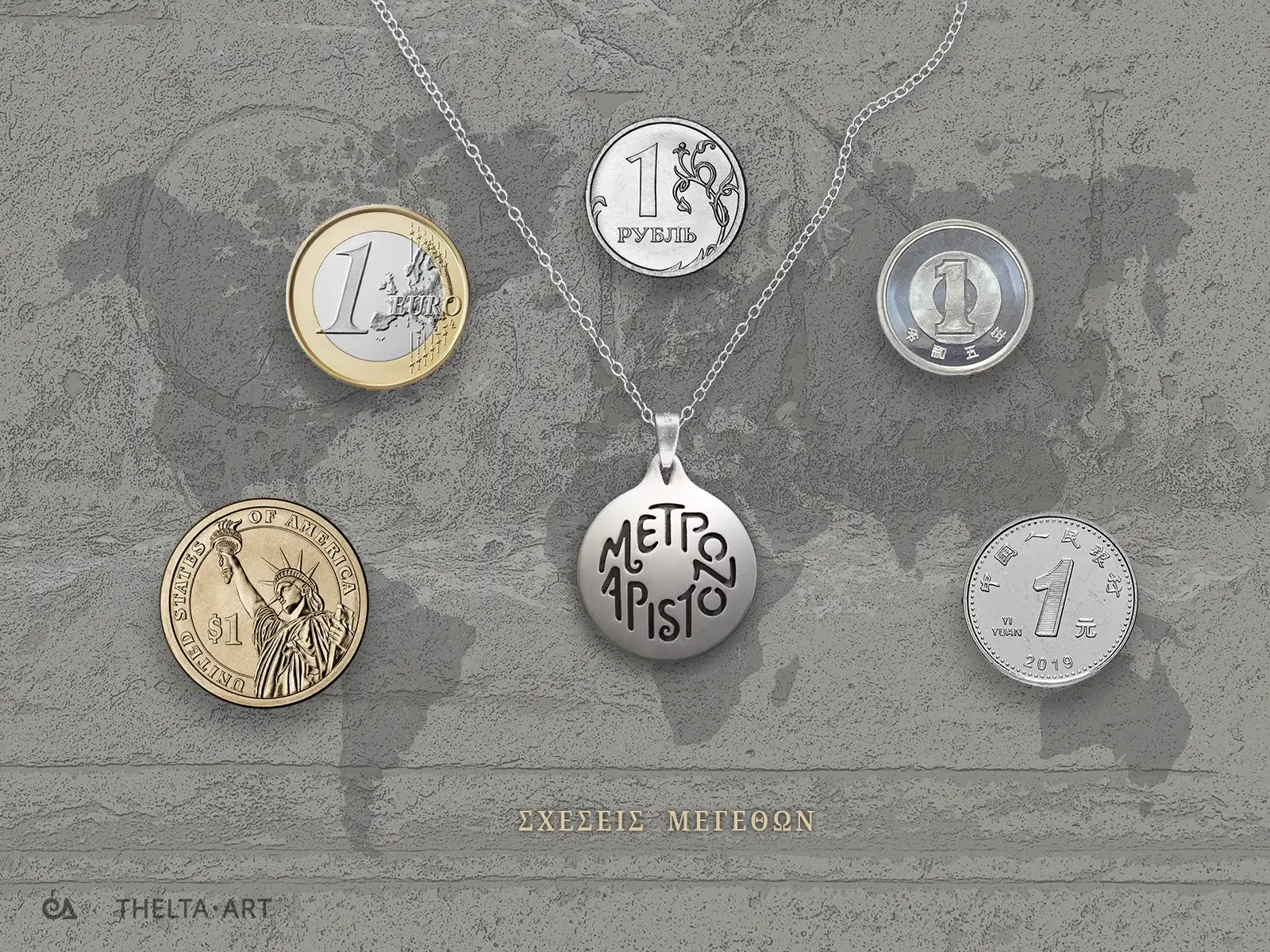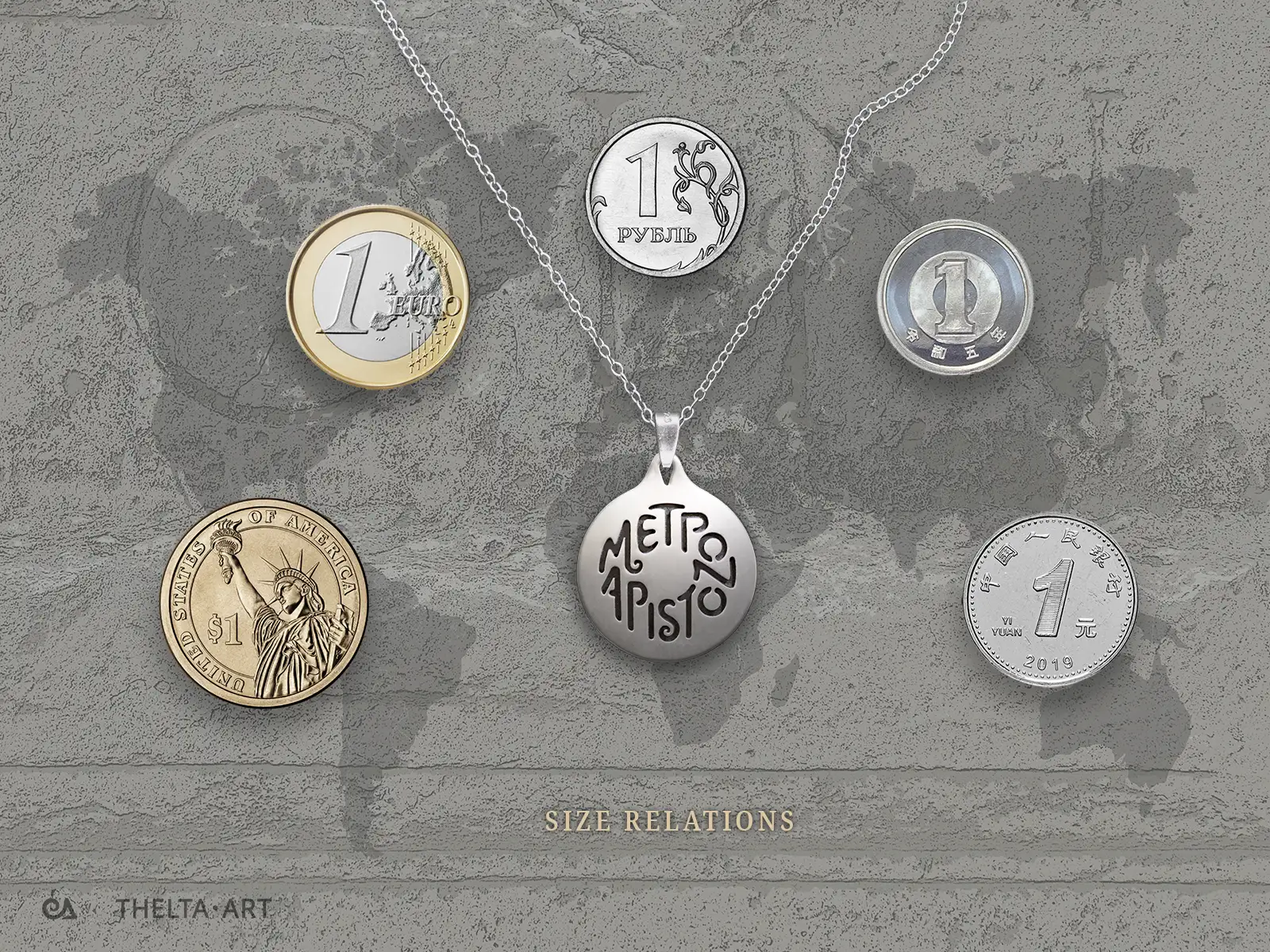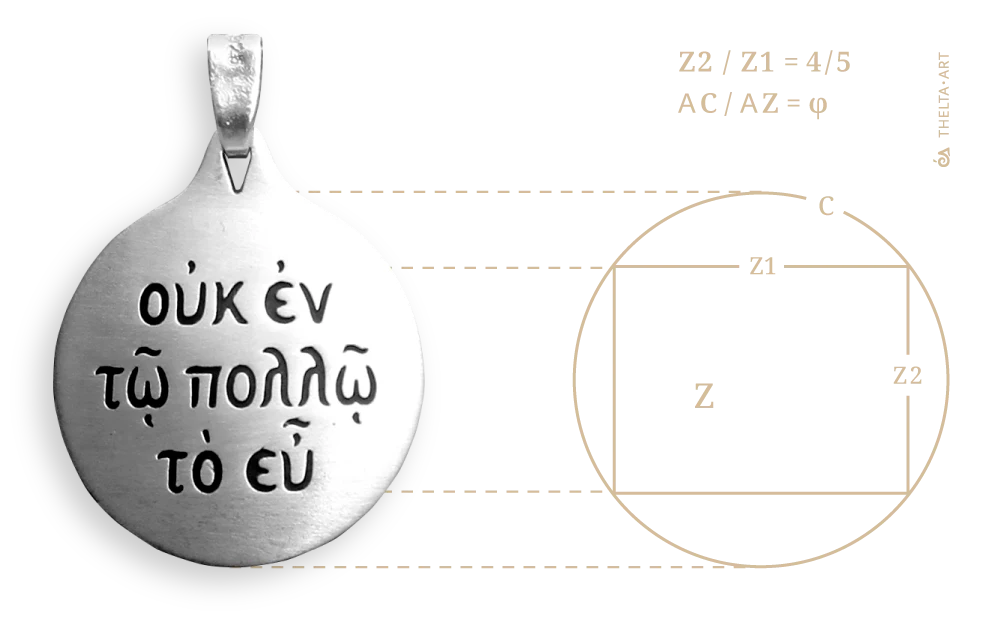
About the quote
The phrase “Uk en tɔː pollo to eu̯, all’ en tɔː eu̯ to poli” as it is in its entirety (The good is not in quantity but in the good the most), does not seem to exist in such wording in ancient literature.
What exists in the work Zenon (who lived in the 5th century BCE) by Diogenes Laërtius, is a similar phrase attributed to a musician named Caphisias, who said it to his student who was playing the flute very loudly..
The short written version of phrase «Οὐκ ἐν τῷ πολλῷ τὸ εὖ” means “Good is not in quantity” and regardless of its origin, describes in a poetic manner this timeless and universal aesthetic value. That is why it remains alive in daily use nowadays.
About the design
In the design, the polytonic system is applied in minuscule script (lowercase characters).
The writing is restricted to a rectangle with sides in a 4/5 ratio.
The area of the circle to the area of the rectangle gives us the golden ratio.
That is Z2/ Z1 = 4 / 5
and AC / AZ = φ (1.618).

















